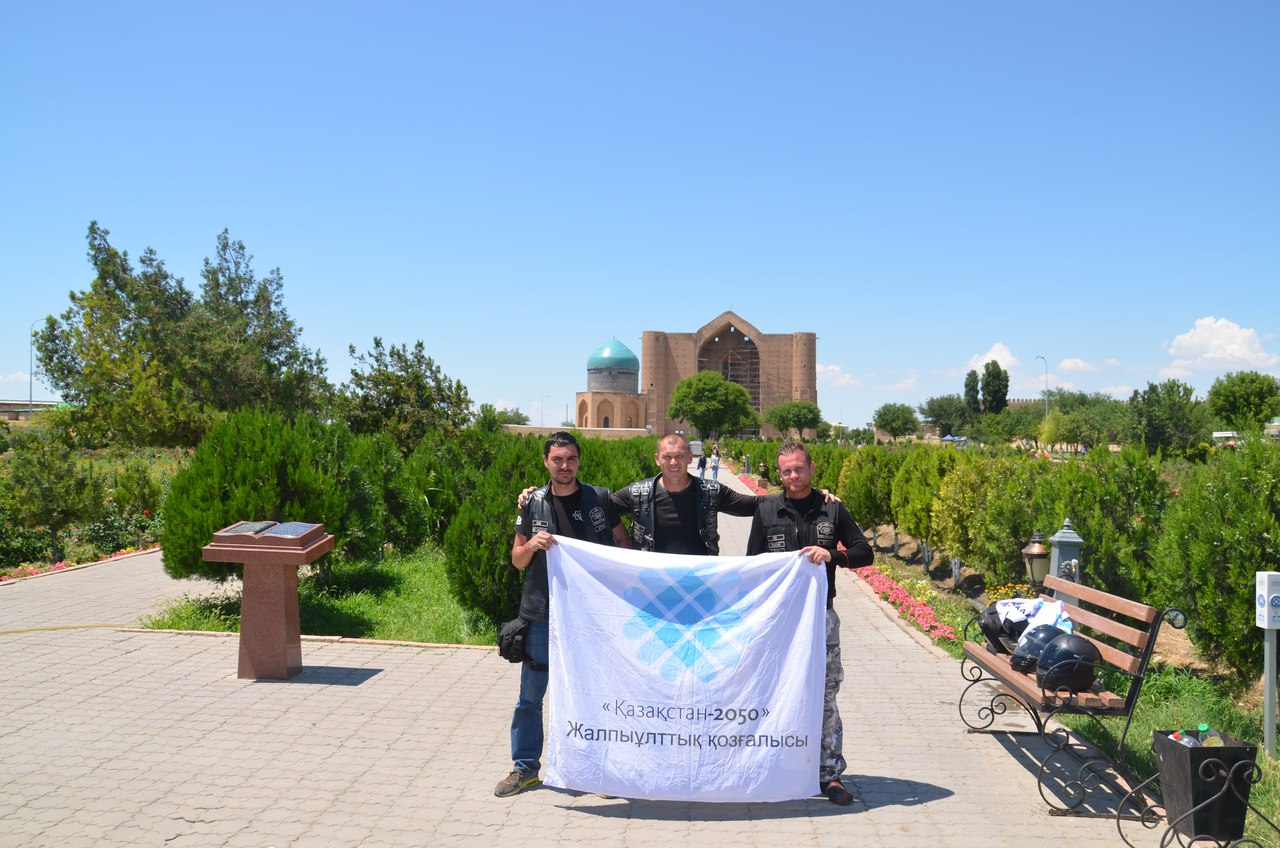
The nationwide movement "Kazakhstan - 2050" organized a motocross "My country", dedicated to the 22nd anniversary of the Assembly of People of Kazakhstan. The motocross covered 25 sacred, historical places of the country.
In turn, the motocross team considered it necessary to visit a medieval eastern banya (hammam) in Southern Kazakhstan. The hammam is a monument of national architectural art. The hammam is half under the ground, multi-domed building which is located in the city of Turkestan of the South-Kazakhstan region. The walls of the eastern bath are laid of burned bricks.

The Eastern Bath consisted of nine rooms; each room had a different area, and served for different purposes. Although the facades do not have decorative ornaments, the expressiveness of the Eastern Bathhouse is given by a group of domes and an open iwan. The upper part of the eastern bath includes: a dressing room, the main washing hall, 8-faceted with an 8-faceted same sofa (couch) in the center, rooms with hot and cold water tanks, etc. The water is taken through open openings to the tanks. The interior of the bath was plastered. In the "hot" room there is a wide sofa for massage.

Sofa and floors are faced with marble slabs measuring 1.5x0.8 m. Interesting is the heating system of the bath with smoke channels laid under the floor. From the oven, the heat rushes to the rotunda located under the 8-faceted sofa of the main hall, from where it is distributed through the system of radial located channels to other rooms. The channels have heat accumulating pockets and exhaust chambers. The slope of the floors allows for an organized flow of waste water and discharge into a septic tank. The monument was restored in 1979.
Translated by Raushan MAKHMETZHANOVA
